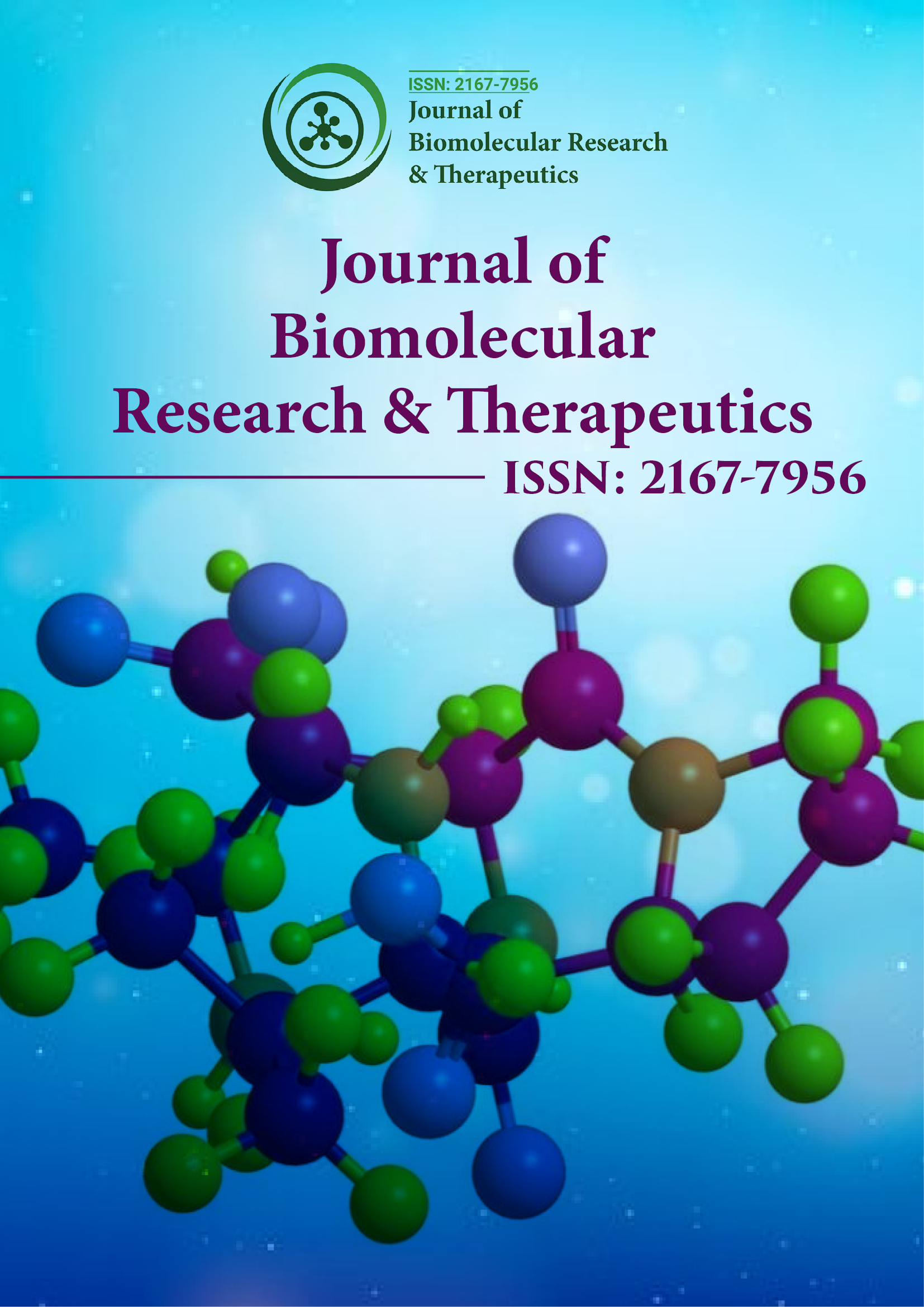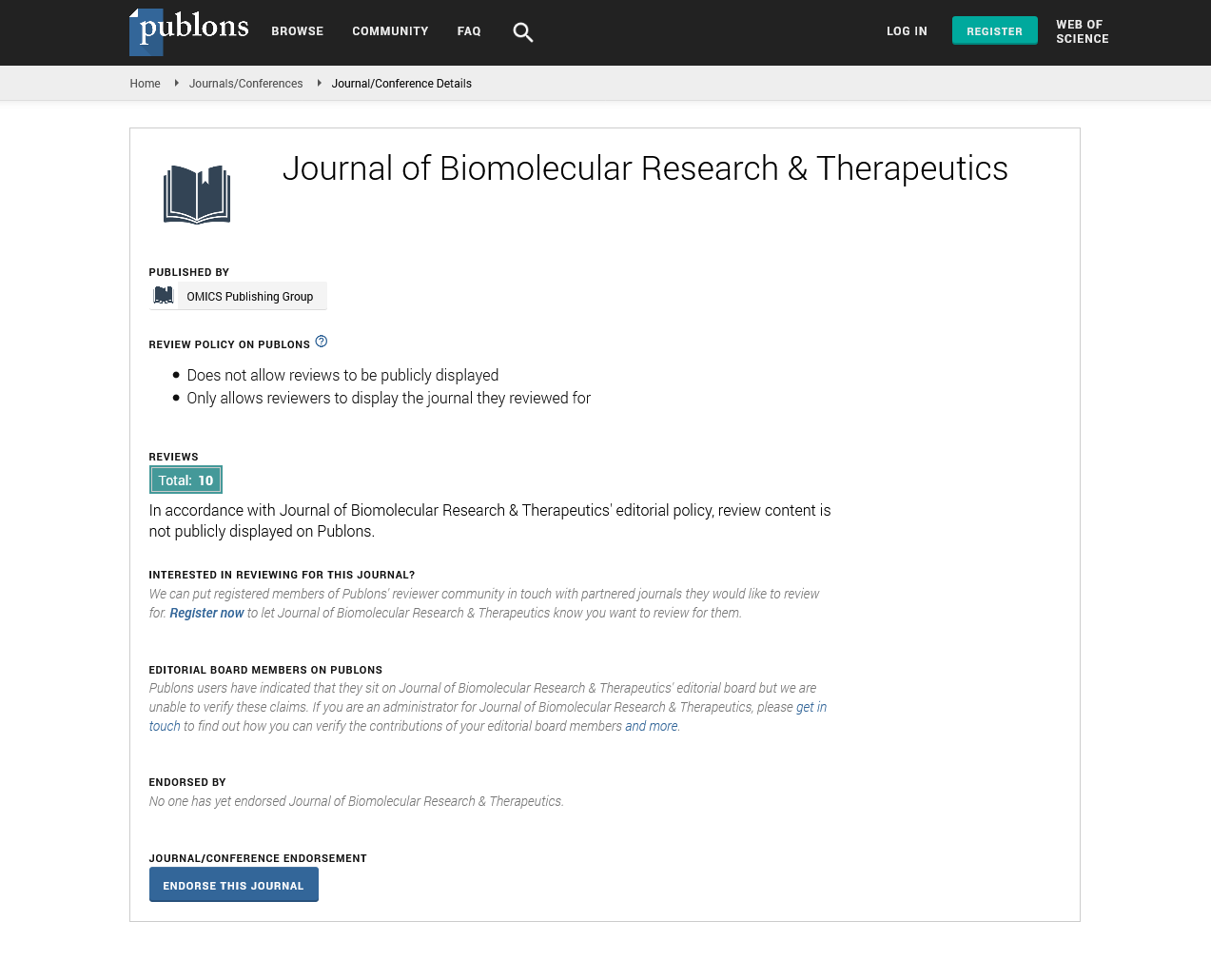Indexed In
- Open J Gate
- Genamics JournalSeek
- ResearchBible
- Electronic Journals Library
- RefSeek
- Hamdard University
- EBSCO A-Z
- OCLC- WorldCat
- SWB online catalog
- Virtual Library of Biology (vifabio)
- Publons
- Euro Pub
- Google Scholar
Useful Links
Share This Page
Journal Flyer

Open Access Journals
- Agri and Aquaculture
- Biochemistry
- Bioinformatics & Systems Biology
- Business & Management
- Chemistry
- Clinical Sciences
- Engineering
- Food & Nutrition
- General Science
- Genetics & Molecular Biology
- Immunology & Microbiology
- Medical Sciences
- Neuroscience & Psychology
- Nursing & Health Care
- Pharmaceutical Sciences
Perspective - (2024) Volume 13, Issue 5
Utilizing Tyrosine: Advancing Site-Specific Bioconjugation Applications
Kristina Szijj*Received: 30-Sep-2024, Manuscript No. BOM-24-27788; Editor assigned: 02-Oct-2024, Pre QC No. BOM-24-27788 (PQ); Reviewed: 16-Oct-2024, QC No. BOM-24-27788; Revised: 23-Oct-2024, Manuscript No. BOM-24-27788 (R); Published: 30-Oct-2024, DOI: 10.35248/2167-7956.24.13.406
Description
The field of bioconjugation has seen remarkable advancements in recent years, driven by the need for precise and efficient chemical modifications of biomolecules. Among the amino acid residues available for conjugation in proteins, lysine and cysteine have historically dominated due to their nucleophilic side chains, which enable selective chemical modifications. However, tyrosine bioconjugation is emerging as a powerful alternative, offering unique advantages in terms of selectivity, stability and versatility. This emergent method is gaining traction in applications ranging from drug development to materials science and diagnostics.
Tyrosine, an aromatic amino acid, stands out for its phenolic hydroxyl group, which provides a nucleophilic site for chemical modification. Unlike lysine, which is often present in high abundance on protein surfaces, or cysteine, whose reactivity can lead to unwanted side reactions, tyrosine residues are less prevalent and usually surface-exposed, making them an ideal target for selective bioconjugation. Furthermore, tyrosine’s unique chemical properties allow for modifications that yield stable linkages resistant to hydrolysis or enzymatic degradation, ensuring the integrity of the conjugated biomolecule.
Recent innovations in tyrosine bioconjugation have focused on developing reagents and reactions that achieve high specificity and efficiency under mild conditions. Traditional methods often relied on diazonium coupling or electrophilic aromatic substitution, which required harsh conditions incompatible with many biomolecules. Advances in chemical synthesis have introduced reagents such as aryl diazonium salts, sulfonyl esters and hypervalent iodine compounds, which facilitate tyrosine specific modifications under biologically relevant conditions. These methods not only preserve the activity of sensitive biomolecules but also allow for precise control over the conjugation site.
One of the most significant breakthroughs in tyrosine bioconjugation has been the development of transition-metal catalyzed reactions. Palladium, copper and ruthenium catalysts have been employed to functionalize tyrosine residues selectively, providing unprecedented control over reaction specificity and product diversity. For example, palladium-catalyzed crosscoupling reactions enable the attachment of a wide range of functional groups to tyrosine residues, expanding the scope of potential applications. These catalytic systems have been optimized to operate under aqueous conditions, further enhancing their compatibility with biological systems.
The emergence of enzymatic tyrosine bioconjugation has added another dimension to this field. Enzymes such as tyrosinase and Horseradish Peroxidase (HRP) catalyze the oxidation of tyrosine residues, generating reactive intermediates that can undergo selective coupling with various nucleophiles. This approach leverages the inherent specificity of enzymes, ensuring siteselective modification of target proteins while minimizing offtarget effects. Enzymatic methods are particularly attractive for modifying complex biomolecules, such as antibodies or protein therapeutics, where precise control over conjugation is essential.
One of the driving forces behind the adoption of tyrosine bioconjugation is its application in developing next-generation therapeutics. Antibody-Drug Conjugates (ADCs) are a prime example where site-specific tyrosine modification has improved the therapeutic index. Traditional approaches to ADC synthesis often result in heterogeneous products with variable pharmacokinetics and efficacy. Tyrosine-based conjugation allows for the attachment of cytotoxic drugs at defined sites, yielding homogeneous ADCs with consistent therapeutic properties. Additionally, tyrosine modification has been used to enhance the stability and bioavailability of protein drugs, addressing important challenges in biopharmaceutical development.
The utility of tyrosine bioconjugation extends beyond therapeutics to the field of diagnostics and imaging. Site-specific labeling of tyrosine residues with fluorescent dyes, radiolabels, or contrast agents enables the development of highly sensitive and selective probes for detecting disease biomarkers. For example, radiolabeled tyrosine conjugates have been used in Positron Emission Tomography (PET) imaging to track the distribution of proteins in vivo. Similarly, fluorescently labelled antibodies and peptides, prepared using tyrosine bioconjugation, have improved the sensitivity and accuracy of diagnostic assays.
In conclusion, tyrosine bioconjugation represents a transformative alternative in the field of biomolecular modifications. Its unique chemical properties, combined with advances in reagents and catalytic systems, have enabled selective and stable modifications of biomolecules. Applications in therapeutics, diagnostics and materials science underscore its potential to address important challenges and drive innovation. While challenges remain, ongoing research and technological advancements are assured to expand the scope and impact of tyrosine bioconjugation, solidifying its role as a pillar of modern bioconjugation strategies.
Citation: Szijj K (2024). Utilizing Tyrosine: Advancing Site-Specific Bioconjugation Applications. J Biomol Res Ther. 13:406.
Copyright: © 2024 Szijj K. This is an open-access article distributed under the terms of the Creative Commons Attribution License, which permits unrestricted use, distribution, and reproduction in any medium, provided the original author and source are credited.

